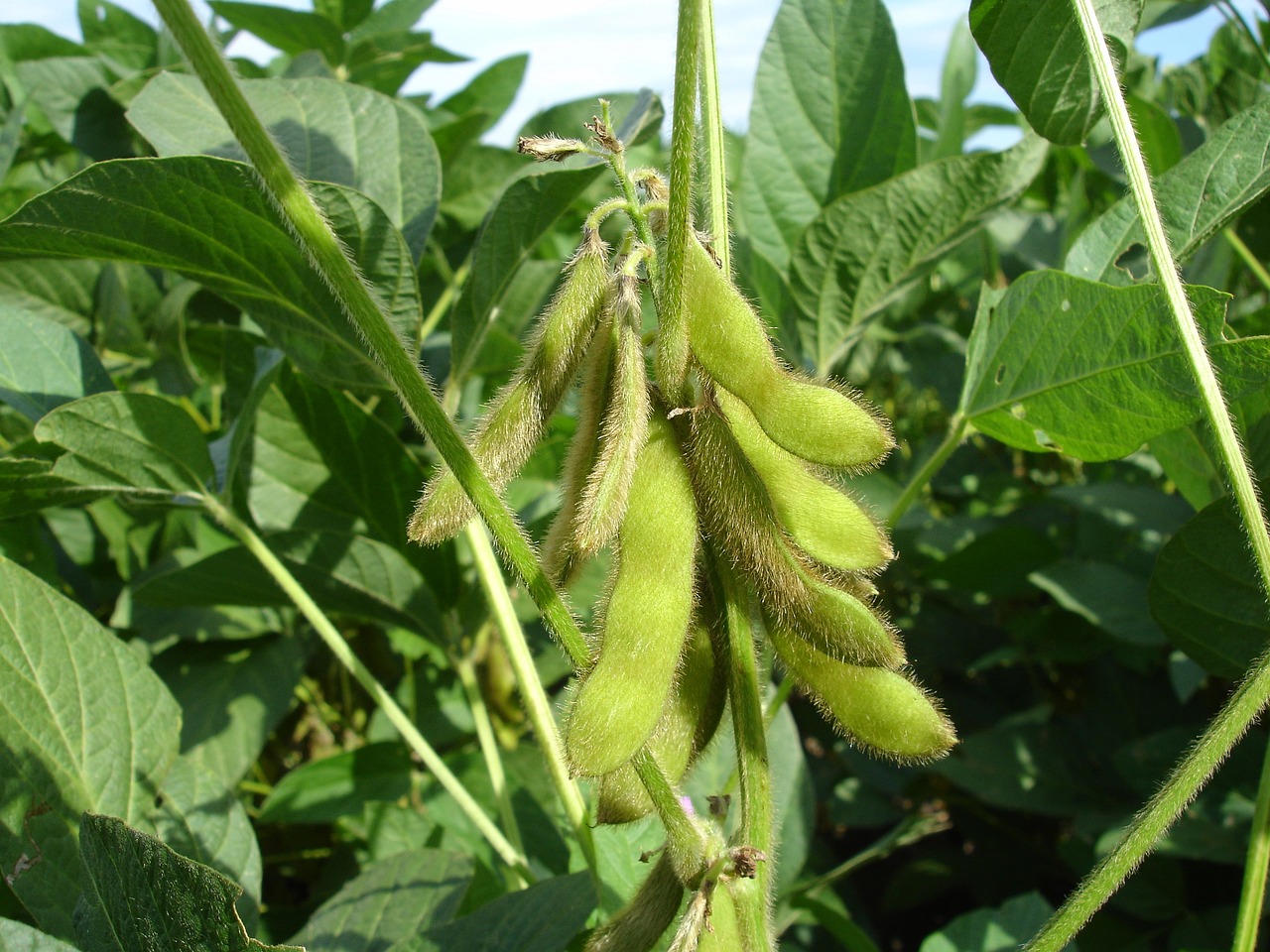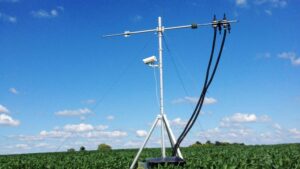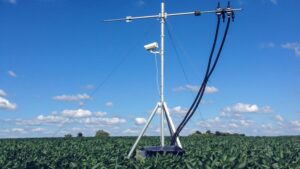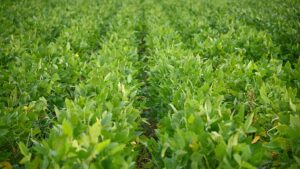USDA and U of Illinois researchers are using fluorescence – the tiny glow of light plants release – to measure the level of stress soybeans undergo from elevated levels of ozone (O3).
A team of researchers from the University of Illinois Urbana-Champaign and the USDA Agricultural Research Service is successfully using solar-induced chlorophyll fluorescence (SIF) to measure the impact of elevated ozone (O3) on soybean plants, according to release.
When plants absorb sunlight, most of that energy is used for photosynthesis. Any unused energy is released by the plant as heat and – invisible to the human eye – a tiny glow of light. This light is called solar-induced chlorophyll fluorescence (SIF). SIF can be utilized to assess photosynthesis and stress, including stress relating to factors like high temperature or high levels of carbon dioxide (CO2)
“Researchers have found SIF to be a faster, safer, and non-invasive way to study photosynthesis,” said Genghong Wu, a former PhD student at the U of I’s Department of Natural Resources and Environmental Sciences, and one of the study’s authors. “That is why it has become so popular. The novelty of this study is that for the first time, SIF was used to measure elevated ozone stress on soybeans in the field.”
USDA ARS scientist and professor Lisa Ainsworth managed the in-field study. She utilized a four-plot system: four plots treated with elevated O3 and four plots left as control. Then, the research team measured the plots’ SIF using a portable spectroscopic system that took readings approximately 1.5 feet above the crop canopy. The team found that SIF decreased in the high O3 environment: in fact, in the late growing season, SIF measurements in O3 treated plots dropped as much as 36%. Because other photosynthetic processes including electron transport and leaf-gas exchange decreased at higher ozone levels, the team concluded that a decrease in SIF is a sign of stress.
SIF can be measured at scale. The measurement technology can currently be employed from an aircraft flying 0.6 miles above a field. Study co-author Genghong Wu hopes to use SIF from an even further distance, tracking photosynthesis from a satellite orbiting the Earth.
“We want to use SIF to estimate or to monitor the dynamics of photosynthesis on a regional or global scale,” Wu said in the release. “To do that, we need to also further understand the mechanistic relationship between SIF and photosynthesis.”
Effectively measuring how crops withstand various stresses will continue to be key to breeding more resilient crops for the future.













